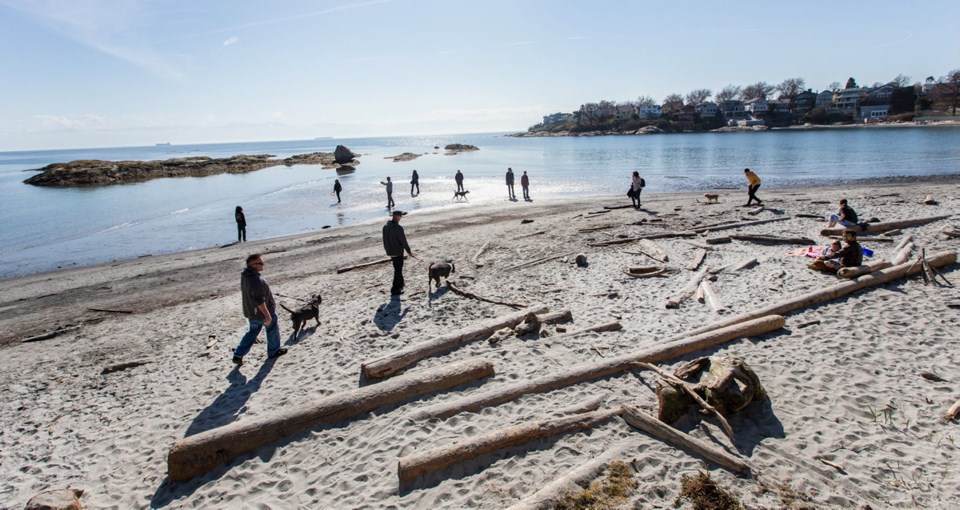Social distancing, self-isolation and quarantine. You’d have to be living under a rock to have missed the explosion of these terms in the last couple of weeks as public health officials implement increasingly strict measures to try to curb the spread of COVID-19.
But what do they actually mean? And what are you allowed to do?
Social/physical distancing
Social, or physical, distancing is what most people are practising right now. If you haven’t returned from international travel, aren’t sick and haven’t been exposed to a probable case of COVID-19, officials say you should be practising social or physical distancing. That means staying at home as much as possible.
You are still allowed to go outside, but officials say to limit outings to essential purposes only, such as grocery shopping, picking up medication or take-out food, solo exercise or a walk for your mental health.
When you do go out, officials say it should only be with the people you live with and you should keep two metres apart (about the length of a queen-sized bed or the width of a car) from anyone else and avoid large groups.
“Yes, you can go outside, but go only with your family members in small groups. Maintain those distances. It is important to maintain our health and mental health through this,” provincial health officer Dr. Bonnie Henry said.
The B.C. Centre for Disease Control suggests using electronic options to connect with friends and family outside your home. The website also reminds everyone to cough into your elbow or sleeve instead of your hands, avoid touching your face — “Keep your hands at your side when possible” — and stay home if you feel at all sick.
Experts say if you have no symptoms, there’s no advantage to wearing a mask or gloves when you go outside, and you may be taking away protective equipment, which is already in short supply, from front-line health care workers who need it most.
Self-isolation
Self-isolation is for anyone who has recently travelled abroad, has possibly come into contact with a case of COVID-19 and anyone with undiagnosed symptoms of COVID-19, which commonly include a cough, fever and trouble breathing. Other possible symptoms may include a sore throat, chills, pink eye, diarrhea, fatigue and a runny nose, according to the Centre for Disease Control.
Those in self-isolation are still allowed to go outside for fresh air, including a run, bike ride, rollerblade, snowshoe, walking the dog or getting the mail, the CDC says. “It [is] important to continue to exercise. But it is important that you avoid crowded areas and stay at least two metres from other people. You should wash your hands before you leave your house and when you return.”
Unlike those practising social distancing, self-isolation means no grocery shopping, no visits to the pharmacy, no public transportation, and no trips to pick up take-out or visiting drive-throughs.
Avoid all enclosed spaces where other people gather. Instead, use food delivery services and online shopping to get what you need, or ask a friend or family member to deliver food and supplies. These people need to maintain two metres from you when dropping things off.
Self-isolation “does not necessarily mean that you have COVID-19, but you are at risk for developing the disease and passing the infection on to others,” the CDC says. “You can be sick and not know it yet. It is important to stay at home because you can develop symptoms at any time.”
If you have no symptoms, you’re asked to stay home for 14-days after your return to Canada. Also stay home if you’ve had possible exposure to COVID-19. Monitor your symptoms. Take and write down your temperature every day, the CDC says, and try to avoid using medications that reduce fever, like acetaminophen or ibuprofen. If you take those medications, wait at least four hours before taking your temperature.
If you develop mild symptoms of COVID-19, the CDC says to continue self-isolating for at least 10 days after the onset of symptoms.
“After 10 days, if your temperature is normal and you feel better, you can return to routine activities. Coughing may persist for several weeks, so a cough alone does not mean you need to continue to self-isolate for more than 10 days,” the CDC says.
If you develop a cough or fever and your condition worsens, call 811. If you are having difficulty breathing, call 911, and make sure to tell the dispatcher you might have COVID-19.
Quarantine
Quarantine and self-isolation are essentially interchangeable, according to the Ministry of Health. People who are in quarantine should also be practising self-isolation. The difference is that quarantine is a term used in epidemiology for people who are feeling well. In this case, that means people who don’t have symptoms but have been at higher risk of contracting the disease, either through recent travel or possible exposure.



